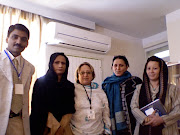Established with an aim of bringing about accelerated growth of all countries of the sub-continent by utilising the immense resources, an imaginative diplomatic initiative, though late on the map of regional groupings, was proposed in 1980. It took five years of laborious and committed diplomacy on Bangladesh's part to effectively establish SAARC. But has the forum energized? Every now and then SAARC leaders have had to "invent an agenda to underscore the organization's relevance."
Not to rule out SAARC's achievements, which includes the establishment of regional Centres - such as a regional Tuberculosis Centre (1992) in Kathmandu; a Documentation Centre (1994) in New Delhi; a Meteorological Centre (1995), and an Agricultural Information Centre (1998), in Dhaka; finally a Human Development Centre (1999) in Islamabad. Proposed is a Cultural Centre to be hosted by Sri Lanka. Ironically, none of these Centres are "truly regional as yet, but national centres of excellence prone to varying shades and styles of regionalism." Optimists are hopeful of the formation of a South Asian Customs Union by 2015 and a South Asian Economic Union by 2020. India is also trying to set up a South Asian Parliamentary Forum, which can premeditate on issues pertaining to regional cooperation. Efforts are also underway to take forward the concept of South Asia Free Trade Arrangement (SAFTA) by 2006.
However, if SAARC was envisioned as a forum, which would help synergize regional complementarities and supplement national efforts towards development, then quite clearly this has not happened. The hope that SAARC would provide incremental benefits to South Asia stands belied. Many times the Annual Summits have been postponed. The reasons are many. It also raises questions as to, how long can a regional organization continue to function with this air of uncertainty even after over a decade and half of existence? How effective can it truly be in meeting its objectives with its current working style? Is the organization ready and willing to take any decisive steps, which might indicate that it is moving in a more constructive direction?
Setting the tone was Prime Minister Manmohan Singh's recent remark that "(he) hope the next SAARC Summit will draw lessons from ASEAN." During the recent talks between Singh and Pakistan Prime Minister Shaukat Aziz, who is the current SAARC Chairman, the two leaders shared the view that the forum has not come up to the expectations and steps needed to be taken to address it. Hence, South Asia clearly has to look to and search for other alternatives if more time is not to be lost.
1. India must weigh its options if in the near future the South Asian economic space, under SAARC, is unlikely to become operational. India already has virtual Free Trade arrangements with Nepal, Bhutan and Sri Lanka. What is needed is a Free Trade Agreement with Bangladesh and Maldives to make a 'limited South-Asian Free Trade Area' operational. We must perhaps include Myanmar, Afghanistan and Thailand in such an arrangement.
2. It is submitted that with Afghanistan in, SAARC will be a "universally complete regional entity". Thus, South Asia will have four 'growth hubs' - Eastern seaboard (Ganges-Brahmaputra-Mekong), Southern seaboard - Sri Lanka, Southeast Asia and Australia; Western seaboard - Maldives, Mumbai, Karachi, Afghanistan, West Asia; Northern land mass - Himalayas, Islamabad, Kabul, Central Asia.
3. As Lakshman Kadirgamar has pointed out, SAARC could function as an "umbrella organization under which some member-states acting together, as with the Growth Quadrangle concept" that SAARC has already accepted, or with neighboring states outside of SAARC, proceed with economic cooperation at a more rapid pace than is possible under SAARC rules of unanimity.
4. The Group of Eminent Persons (GEP) report recommends a pragmatic social charter for sustained and methodical SAARC cooperation in areas like poverty eradication, human development etc. The idea then should be Social Union prior to Economic Union.
5. Regional Security should be taken as a key segment for the successful function of the SAARC. This is where the Gujral Doctrine is important. In this regard the recent Pakistani call, articulated by its Foreign Minister Khurshid Mehmood Kasuri and President Pervez Musharraf, to set up a dispute resolution mechanism within SAARC can be boldly considered.
While India should do her best to reconstruct a South Asian Forum, it is much too large a country to be confined to South Asia alone. Indeed, India has to carry her smaller neighbours towards cooperative prosperity. Many of India's neighbors have yet to come to terms with their geo-political, geo-economic and historical reality and destiny. When they do, SAARC may make sense. Till then, it will remain a "talk shop".












No comments:
Post a Comment